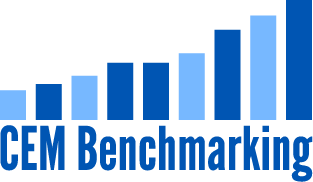The Impact of Service Models on Pension Administration Costs: A Closer Look
In recent years, you have likely come across images online of a high-glass-walled city cutting straight through the Saudi desert. Once touted as a vision of the future, the $500 billion NEOM mega-project, which involves transforming mountains into cities and building ports, has encountered financial challenges. As The Wall Street Journal’s “The Emperor’s New Clothes” podcast reported, officials relied on one performance metric to justify continued investment: the internal rate of return (IRR). Models were manipulated to keep IRR projections hovering around a politically significant nine percent, even as the underlying economics deteriorated.
This story highlights a broader issue with how IRR is often less transparent as a performance metric. IRR is usually presented as a story about value creation, when it is actually a story about cash-flow timing and underlying model assumptions.
What is IRR?
At its core, IRR is the discount rate that sets the net present value of a series of cash inflows and outflows to zero. It is a money-weighted rate of return, explicitly accounting for the size and timing of cash flows in a portfolio. This framing is intuitive in private markets where capital is called, invested, and distributed unevenly, and investors want a single number summarizing this sequence.
CEM’s 2025 Maple Middle community benchmarking project — bringing together mid-sized Canadian pension funds — surveyed the range of KPIs plans use to assess performance. The Maple Middle funds used multiple metrics, including Time-Weighted Rate of Return (TWRR), Multiple on Invested Capital (MOIC), Total Value to Paid-In Capital (TVPI), Net Asset Value Growth (NAV), Distribution to Paid-In Capital (DPI), Cash-on-Cash Return (CoC), Performance Target Benchmarks, and, of course…IRR.
Where can IRR go wrong?
- IRR compresses a messy sequence of calls and distributions into a single annualized figure that feels like yield. The trouble begins when IRR is treated as a realized rate of return rather than a discount rate that balances cash flows and assumes every interim dollar gets reinvested at the same rate for years. Once early wins are achieved, since-inception IRRs can become sticky. Later losses barely budge the headline number.
- IRR contain structural distortions that bias results upward. When short-duration deals both vary more and often score higher annualized outcomes than long-dated ones, annualized IRRs exhibit a systematic upward tilt worth two to three percentage points per year. Add standard practices, such as subscription credit lines that delay capital calls and shorten measured hold periods, and a good-looking IRR can owe more to financing mechanics than to actual value creation. In many private equity and infrastructure strategies, a large portion of IRR is driven by terminal NAV or assumed exit values. Minor changes to these estimates or their timing can swing IRR.
- The math behind IRRs is prone to glitching. Projects or funds with non-normal cash flows, such as outflows followed by inflows and then another round of outflows, may generate multiple valid IRRs or none at all. That means a headline IRR can sometimes be as much an artifact of calculation as of performance.
- IRR can mislead when comparing projects of different sizes or aggregating across investments. A small deal that returns capital quickly can post a spectacular IRR yet add little to the portfolio’s overall value, while a larger investment with a lower IRR may be far more consequential. Similarly, averaging IRRs across funds is a category error. Only consolidated cash flows can produce an actual portfolio IRR, yet the temptation to line up percentages side by side is strong. This practice makes cross-strategy or cross-manager comparisons fraught. Compounding this issue, most industry datasets suffer from survivorship bias. Poor-performing funds are less likely to report or raise successors, leaving databases tilted toward survivors with stronger IRRs, which inflates reported averages across vintages. How CEM Approaches IRR.
